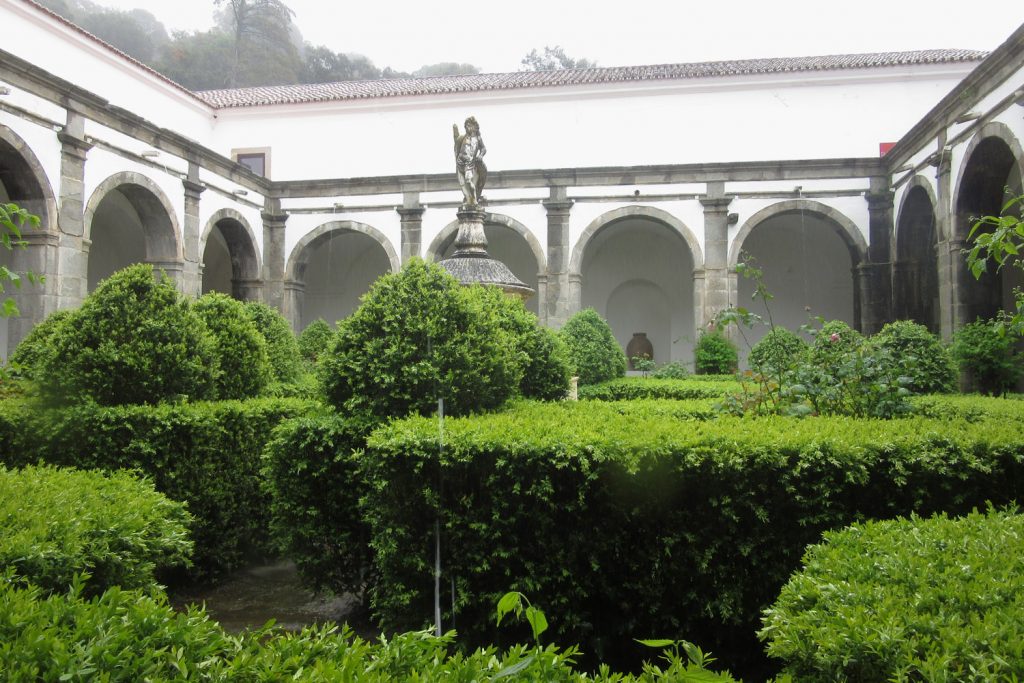Portugal 2019
An international event hosted by Mediterranean Gardening Association
Bringing the Mediterranean Landscape into your Garden
Click on the images to enlarge them
In April 2019, members of MGF joined friends from other Mediterranean Gardening International groups at a spring conference organised by Rosie Peddle and colleagues from MGAP.
Rosie writes:
“Participants, including keen amateur gardeners and professionals from South Africa, Australia, California, Chile, France, the UK, Spain and Portugal gathered early in April – all with a Mediterranean climate in common. For many, this was their first visit to the Algarve and to Portugal, and we were keen to show them some of the best private and historic gardens and landscapes in the south of the country.
An Algarve pre-tour group spent four days visiting gardens and wildflower hotspots including in Messines, Monchique and the west coast. Private garden visits guided by the owners are always a great treat and very special. The tour included the MGAP Barrocal Botanic Garden near Silves and some convivial lunches in spectacular locations overlooking the Algarve hills and coastline. Finding Paeonia broteroi in flower was a highlight and, despite the dry winter, there was a good show from Cistus ladanifer in the hills and some orchids on the coast. “
Four trainees with the Professional Gardener’s Guild joined the group and one of them, Jennifer Wright, has written an illustrated account of their experience.
Rosie continues:
“The theme of the event was the highlighting of new trends in garden design and landscaping to achieve a more natural style and sustainable gardens. We were lucky to have Olivier Filippi and James and Helen Basson as our keynote speakers. They were ably supported by talks on the ‘montados’ (cork oak forests), the use of native plants in Porto Botanic Garden and new methods of teaching about, and creating, low-maintenance natural-style gardens.
The Évora section of the event was well supported, with 140 attending the Saturday morning talks. It was very pleasing to have with us students of landscape architecture, professional landscape architects and gardeners from around the Mediterranean who gathered together in the university auditorium on April 6. The talks were filmed so that many more may benefit from the inspiring and authoritative presentations.
Olivier Filippi’s talk, Bringing the Mediterranean landscape into your garden, is about creating drought-tolerant gardens and is inspired by his lifetime of research on plants and Mediterranean landscapes. You can view it here.
A discussion session following the talks gave an opportunity to ask questions of our speakers and inevitably this included the recent advice for total land-clearance around houses in Portugal. The wholesale removal of fire-resistant plants was condemned as native hardwoods can be protective in many situations.
The global launch of the English version of Olivier Filippi’s latest book took place at the conference and he was there to sign copies for visitors. The book is called Bringing the Mediterranean into your Garden – how to capture the natural beauty of the garrigue. It is lavishly illustrated with 400 photos by the author from Mediterranean-climate countries showing the landscapes and gardens that have inspired him.”
In the afternoon, as a follow up to the talk on cork oak forests, we visited the Herdade da Maroteira, an example of Montado, the traditional agro-forestry system used in the Alentejo region. This 540 hectare estate, owned for over five generations by an Anglo-Portuguese family, was dedicated to cork forestry and livestock; it has now been diversified to include a vineyard. The current owner, Phillip Mollet, explained the 10-year cycle for harvesting cork.
Once every 5 years each tree is pruned, which gives the cork oaks their characteristic flat-topped bowl shape. The reason for pruning is to open up the tree to increase the crop of acorns, these are then consumed by pigs, brought in from Spain each winter for fattening. In June, once every ten years, the bark is removed and processed for use as corks and cork products.
On Sunday, we drove to Borba, where we visited the garden of the 17th century Quinta do General, owned by the same family for over 400 years.
The garden, designed to be both productive and as a place of leisure, is laid out to a formal rectilinear design. It has box gardens, a pool, fountains, statues, an orange grove and an avenue of mature Celtis australis trees.
The final stop was Convento de São Paulo, a monastery founded in the 4th century, with the present building having been constructed in the 15th and 16th centuries.
We had a guided tour of the building, which is now mainly used as a hotel, and the walled gardens where the monks cultivated fruit, vegetables and herbs.
Text: Christine Daniels
Photos: Alfredo Unda and Christine Daniels
![]()









